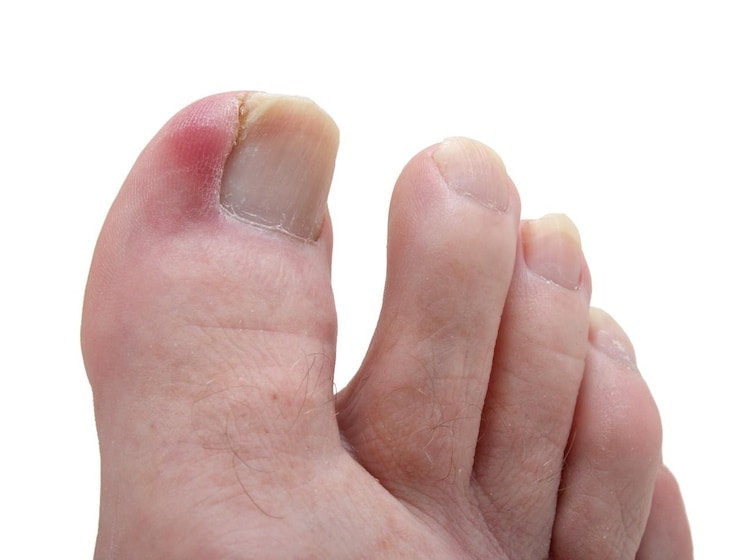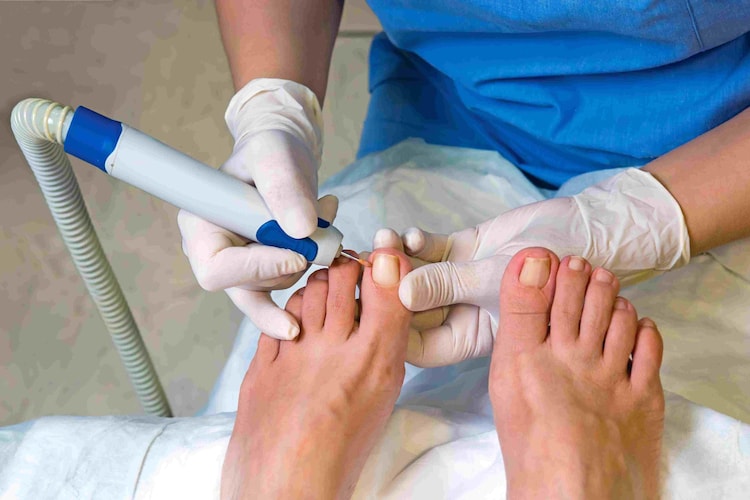Pain in toes! How to deal with ingrown nails
If you are experiencing redness and pain around your nail that is becoming unbearable, you may be dealing with an ingrown toenail. If left untreated it can cause significant discomfort and complications.

in short
- An ingrown nail occurs when the edge or corner of the nail grows into the surrounding skin.
- Symptoms of ingrown toenail include pain, redness, swelling, pus and difficulty walking.
- Never leave an ingrown toenail untreated, as this can lead to infection and increased pain.
Ingrown toenail…it’s a pain you have to experience to believe. If you have ever dealt with an ingrown toenail, you know how excruciating the pain can be. The constant irritation and sensitivity around the nail is enough to make you scream.
For 31-year-old Nimisha Sharma (name changed), it was a problem she had been struggling with for years. Every time she brushed the skin near her big toe, she felt what felt like an electric shock of pain. It wasn’t until years later that she finally went to a doctor and learned that she was struggling with an ingrown toenail. Solution? Extraction.
But is nail removal really the only way to deal with ingrown nails, or are there other solutions that can provide relief? Let us know from the experts.
What is this?
Consultant dermatologist Dr Priyanka Kuri said, “An ingrown toenail refers to a growth along the edge or corner of the nail – often in the soft tissue surrounding the toenail, causing pain, redness, swelling and sometimes pus. Can also be made.” Reportedly at Aster Whitefield Hospital, Bengaluru India Today,
Doctors say that, in most cases, it is the result of poor trimming of nails, wearing narrow or oversized shoes, and scratching on the toes due to excessive rubbing.
Additionally, familial traits such as ingrown nails or conditions that put pressure on toenails can increase a person’s chances of suffering from ingrown toenails. If left untreated, the condition may worsen, leading to increased pain and other complications.
Furthermore, Dr. Shifa Yadav, consultant dermatologist and cosmetologist at Artemis Hospital, Gurugram, shares some symptoms of ingrown nails:
- pain and tenderness: This is the most common symptom, especially when pressure is applied to the affected area.
- redness and swelling: The skin around the ingrown nail becomes swollen.
- pus: If an ingrown nail becomes infected, pus may form.
- difficulty walking: In severe cases, walking may become painful due to pressure on the affected toe.

“Ingrown toenails primarily affect the toenails, especially the big toe. However, they can also occur in the fingernails, especially the big toe,” says Dr. Yadav.
For nails, Dr. Kuri says, causes can include nail biting, cutting nails too deeply, or scratching. Although the symptoms of both nail conditions are similar, the causes are different.
Don’t ignore ingrown nails
If an ingrown toenail is left untreated, it can lead to a number of complications ranging from minor discomfort to serious health concerns.
“Initially, pain, warmth, and swelling indicate an ingrown toenail, which over time can lead to the development of pus, increased pain on the damaged side, and an inability to walk or move. Any excessive skin growth And can also see chronic infection in severe cases,” explains Dr Kuri.
Other health problems, such as diabetes, peripheral vascular disease, and immunosuppression, can worsen the condition.
Experts say that ingrown toenails can appear in people of all ages, but are most often seen in teenagers and young adults due to the rapid growth of nails and their active lifestyles.
Athletes are at risk as well as people who wear tight-fitting shoes or who do not cut their nails properly. Additionally, individuals with naturally curved nails or a genetic predisposition are more easily affected by this problem.
Injuries to toenails or nails can also increase the risk of ingrown toenails.
How to know if you’re dealing with someone?
Dr. Yadav tells us that an ingrown nail usually appears as a red, swollen area of skin around the edge or corner of the nail.
Look carefully to see if the nail is partially driven into the skin or if there is pus or drainage from the affected area. If so, you may be dealing with ingrown toenails.
Other symptoms of irritation in the affected nail may include thickening of the nail, persistent changes in color, or uneven edges.

dealing with ingrown nails
According to Dr. Kuri, ingrown toenails can be treated in different ways depending on their severity.
- For mild cases, home remedies such as soaking the affected area in warm, soapy water for 15-20 minutes a few times a day will help reduce inflammation and soften the nail.
- Applying a warm compress to the affected area for 10-15 minutes at a time may also help.
- Checking the ingrown corner with a clean earbud or some dental floss can also help the nail grow properly.
- Pain and infection can also be controlled with painkillers and antiseptic creams.
However, for severe cases or infected ingrown nails, medical treatment is necessary.
“In some cases, a minor surgical procedure may be needed to remove part of the nail. This is usually done under local anesthesia. In severe cases, the doctor may need to remove part of the nail to prevent it from growing back. What may be required is the skin,” says Dr. Yadav.
preventing ingrown toenails
- Experts say that more and more people suffer from ingrown nails nowadays due to poor nail cutting practices which cause nail-related infections. Avoid cutting nails too short, as this increases the risk of the nail moving into the surrounding tissue due to pressure.
- Additionally, the choice of shoes is another aspect that should not be ignored. Poorly fitting shoes compress the toes, causing the nails to grow inward, most commonly seen in the big toe.
- Athletes or people who engage in activities that are hard on the feet should wear protective shoes to help avoid trauma.

- Good foot care habits, such as cleaning and drying nails to prevent infection, also help prevent ingrown toenails.
- People who have curved or ingrown nails are encouraged to keep track of how their nails grow and see a doctor regularly to manage the problem.
Remember, if your ingrown toenail is severe, painful, or is not improving with home treatments, it is important to seek professional medical advice. Prompt treatment can help prevent complications and promote faster healing.
